Today we go to the Saintes-Maries-de-la-Mer to discover a culture still unknown to some: gypsy culture.
In January 2019, the capital of the Camargue, Saintes-Maries-de-la-Mer, joined the closed circle of “Villes sanctuaries de France”. An honorary title that highlights the religious and cultural richness of a city, and which could already boast Lourdes , Ars or again Mont-Saint-Michel .
But in the Saintes-Maries, it is a very special spiritual heritage that is celebrated: that of the travellers and their patron saint: Sara the Black. Have you ever seen images of the procession, where the statue of Sara the Black, emboldened in an opulent dress, is taken from the church of Saint Marys to be immersed in the sea?
It is the highlight of a show that takes place on two days, on May 24 and 25. During these festivities the gypsy pilgrims spend time with Sara the Black, as they visit a member of their family. Moreover, if the pilgrimage is naturally associated with Gypsy culture, it concerns all the peoples of the people of the journey: Roma, Bohemian, Yeniche, or Manouches.
We take you on a journey to discover a unique and festive pilgrimage to Saintes-Maries-de-la-Mer, to better understand this event that brings together thousands of people every year!
A small tour of the Saintes-Maries-de-la-Mer
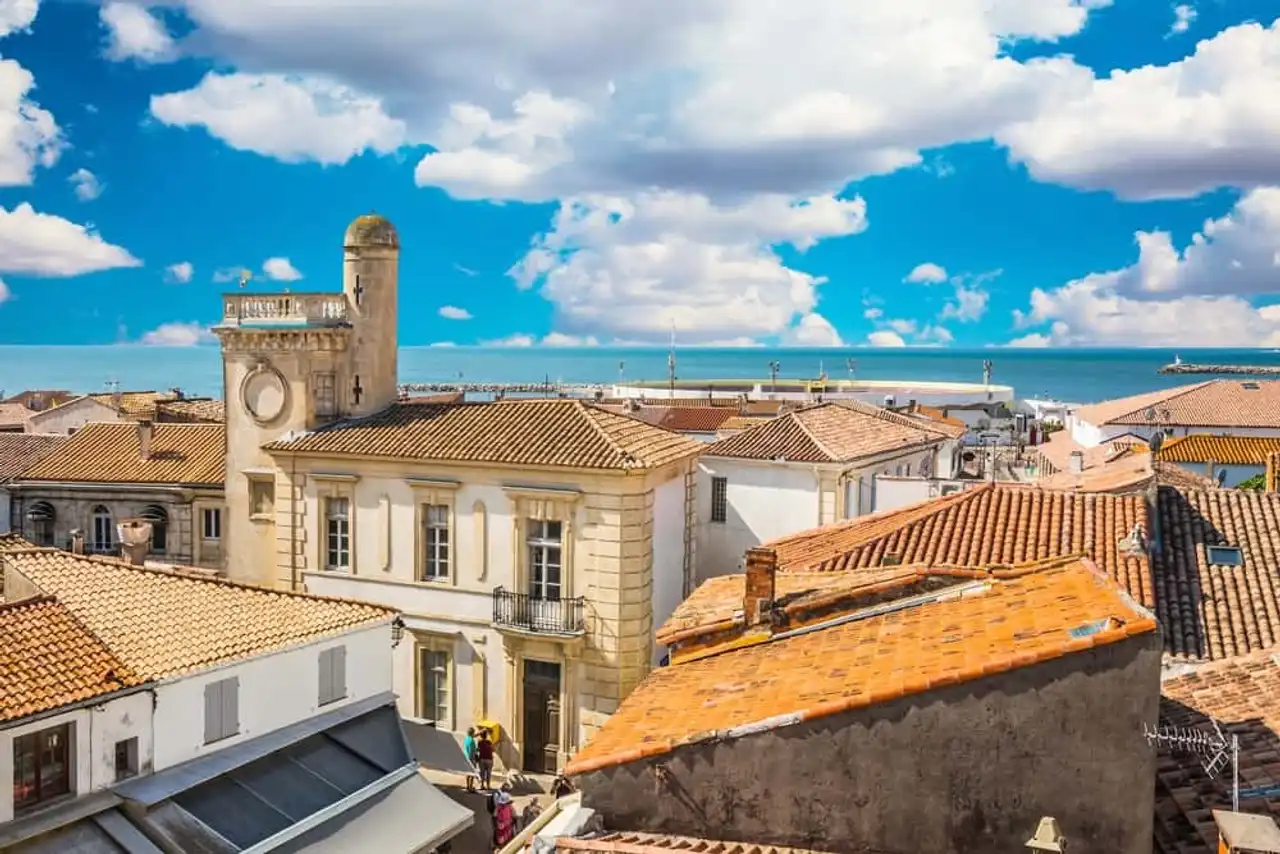
Photo credit: Shutterstock – kavram
Before we discuss the spiritual theme, we will familiarize ourselves with the pretty commune of Saintes-Maries-de-la-Mer, located at the mouth of the Petit-Rhône. There, there are 2,500 souls who live full-time in this picturesque, isolated village of Camarguais, hardly greater than a fishing village.
The town is located close to the Camargue Natural Park, where the flamingo roses make the region famous. Also, the Saintes-Maries are close to Arles, a city of culture famous for its annual photography festival.

Camargue Regional Park - Photo credit: Shutterstock – Uhryn Larysa & pixelshop
Moreover, the route of Arles to the Saintes-Maries, which lasts about 30-40 minutes, is known for its beauty: it crosses rice fields, some marshes, but also bull farms and equestrian centers. The road also passes through the Camarguais Museum and Avignon Castle: two establishments that provide a better understanding of the local culture and heritage of the Camargue.
The Saintes-Maries-de-la-Mer are a sunny and discreet seaside resort, where tourists enjoy walking around the old village with paved streets and white houses. Because it is all the charm of Provence and the Camargue that makes this place an ideal holiday spot for the summer season. In Saintes-Maries, you don’t have to bother with a vehicle: let your legs guide you to the seafront, then choose a horse to enjoy the coast.
You understood: Saintes-Maries-de-la-Mer is a small tourist village in the South of France. Yet, in some communities of the travellers, such as gypsies, gypsies, or Roma, the Saintes-Maries are much more than a seaside resort where it makes good living: it is a sacred place, the last residence of Sara the Black, of which we will tell you a little later...
The Three Marys, holy travelers of Palestine
We have presented you the Saintes-Maries-de-la-Mer by deliberately omitting to speak of his church: for this is where our story really begins.
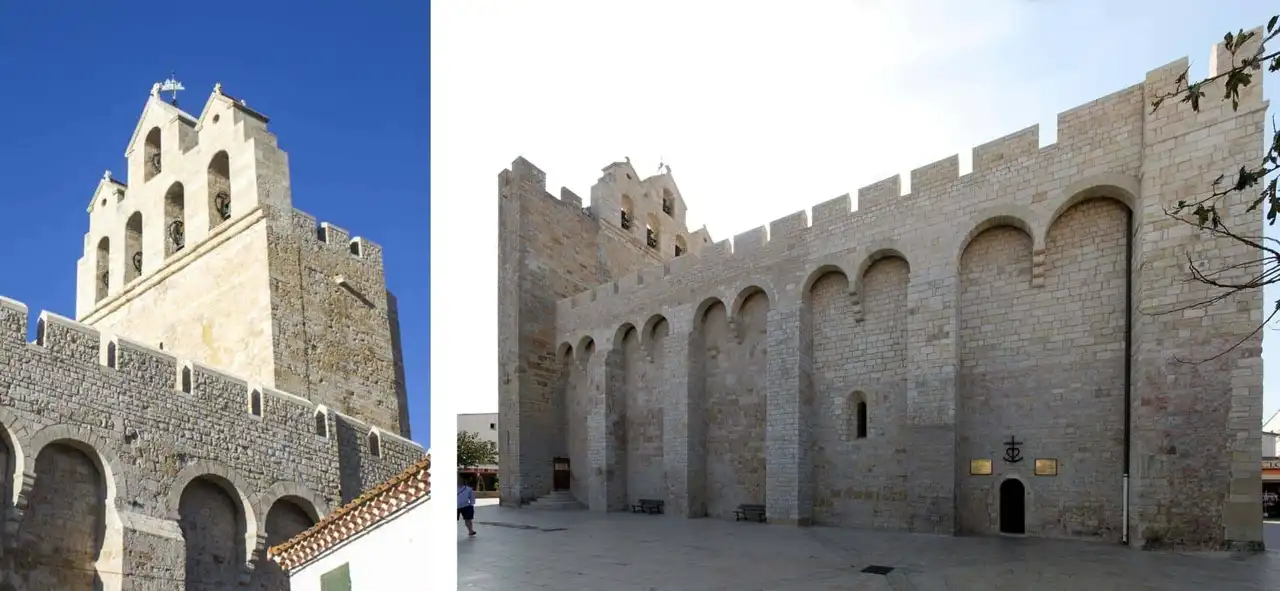
Église Saintes-Maries-de-la-Mer - Photo credit: Shutterstock – Joaquin Ossorio Castillo & Wikipédia – Armin Kübelbeck
The Shrine of the Holy Marys, also known as the Church of Notre-Dame-de-la-Mer, is located in the heart of the village. Built in the 9th century (between 1165 and 1170 more precisely), the building first served as a fortress against the various invasions in the Middle Ages. The church has a dungeon, and a façade that recalls that of the fortified castles. His style, once a novel, then adapted to the Gothic trend, also echoes the Avignon pope palace located in the region.
If you visit the church, you can browse its three parts: the nave, the chapel and the choir. Turn around the roof, where the view of the Mediterranean is hypnotizing.
What makes this unique sanctuary remains the presence of sacred relics: those of two of the Three Marys, Marie-Jacobé and Marie-Salomé. The third, Marie-Madeleine, wife of Christ in certain sacred texts, would have moved to different places of Provence.
His relics are not in the sanctuary. On the other hand, a third sacred figure is added to Marie-Jacobé and Marie-Salomé: that of Sara the Black, a saint to black skin from Upper Egypt.
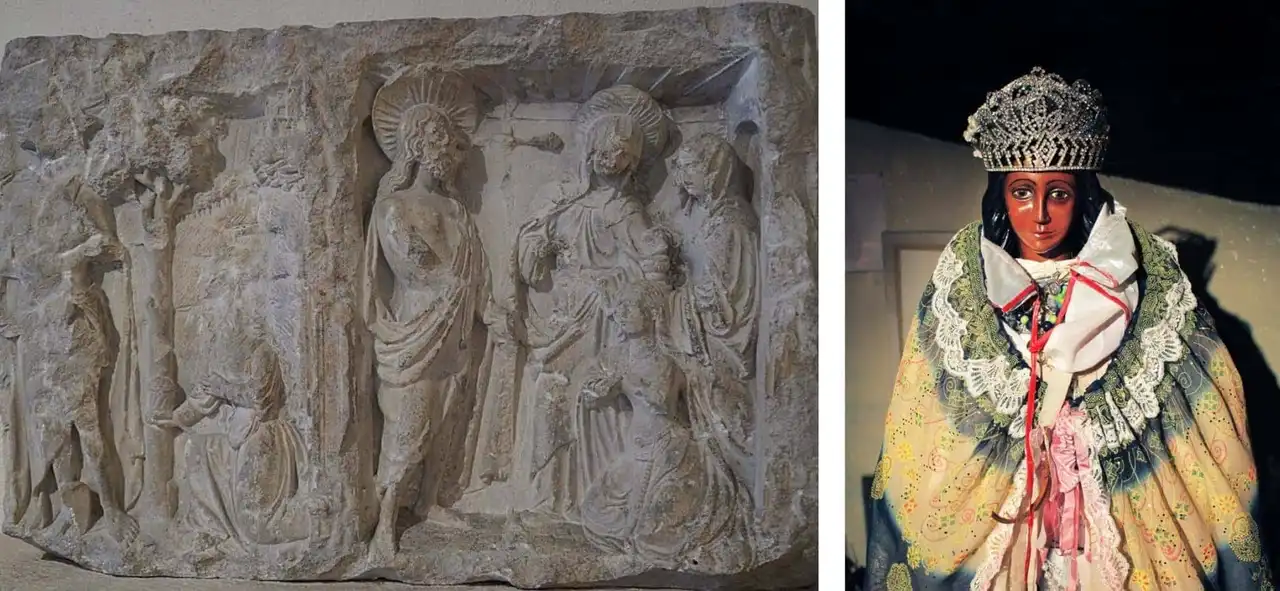
Photo credit: Wikipedia – G.Garitan ' Shutterstock – Tobik
The stories of the Three Marys and Sara vary according to legends and Gospels. Each story resonates bell sounds from both Provencal traditions and sacred books. The most popular story tells us that the Marys would have come from Palestine in a boat with a group of Christians and would have failed in Camargues, where Sara la Noire would have welcomed them, then became their maid.
In one of the versions of the gospel, the Three Marys were disciples of Jesus who exiled in Camargue after a threat from the Romans. In addition, another legend tells us that the Three Marys could also represent the three daughters that the grandmother of Jesus, Sainte-Anne, would have had. The latter would have embalmed the body of Christ after his crucifixion.
The Three Marys also do not escape the field of astronomy since in some countries the constellation “Cineture d’Orion” bears the name of “Tres Marias”, paying tribute to them.
In all cases, the mystery around their lives, their role in the Catholic religion, and their entry into the heritage of this small village of Camarguais remains all...
The first pilgrimages
It is finally in the Middle Ages that the pontificate of Avignon designates the Saintes-Maries-de-la-Mer of sacred place for pilgrimages. Indeed, in 1448, King René learned that the relics of the Saintes-Marie were still on the coast of Camarguaise, not far from the city of Arles.
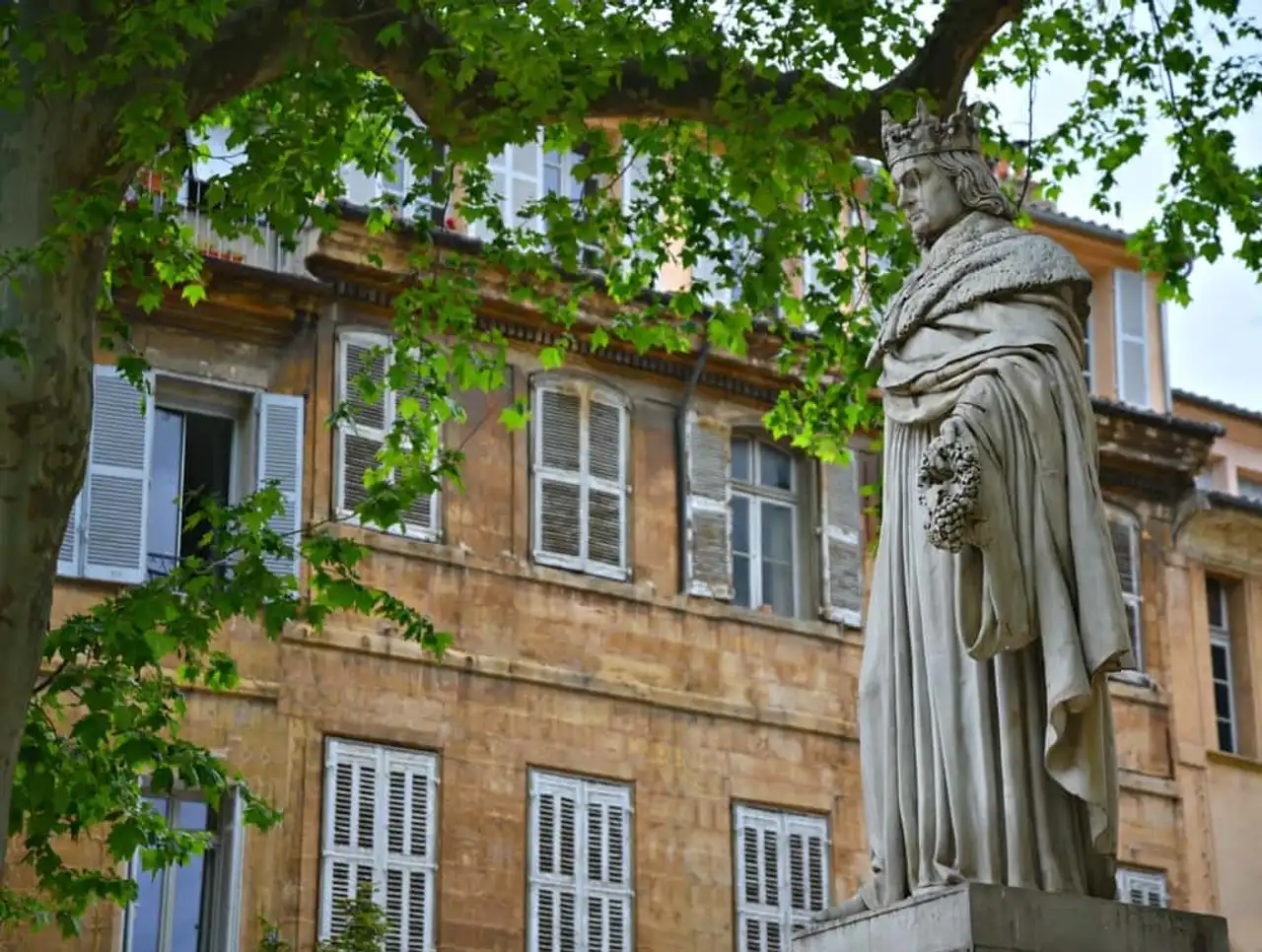
Statue of King René - Photo credit: Shutterstock – Eleni Mavrandoni
He ordered excavations with the hope of discovering the famous relics: it would be a “sacre”, but also a lucrative opportunity to make this small coastal hamlet a place of pilgrimage. The relics are finally discovered to the very place where the crypt is currently located. In addition, during their research, the workers of the time report having found a human head, bones and pottery.
After the discovery, the relics of the Saintes-Maries are installed in stele in the heart of the church. The bones would have been placed in a reliquary for both Marys, and in a simple box for Sara. At that time, it was finally decided that Marie-Jacobé will be celebrated on May 25, Marie-Salomé on October 22, and then the two Saintes without distinction on December 3.
The Saintes-Maries being located on the road Saint Jacques de Compostelle , pilgrims flock by mass from the end of the Middle Ages to pray. However, the French Revolution, then the great diseases and extreme misery stop pilgrimages. The spirituality of the place is finally abandoned for the benefit of the seaside tourism.
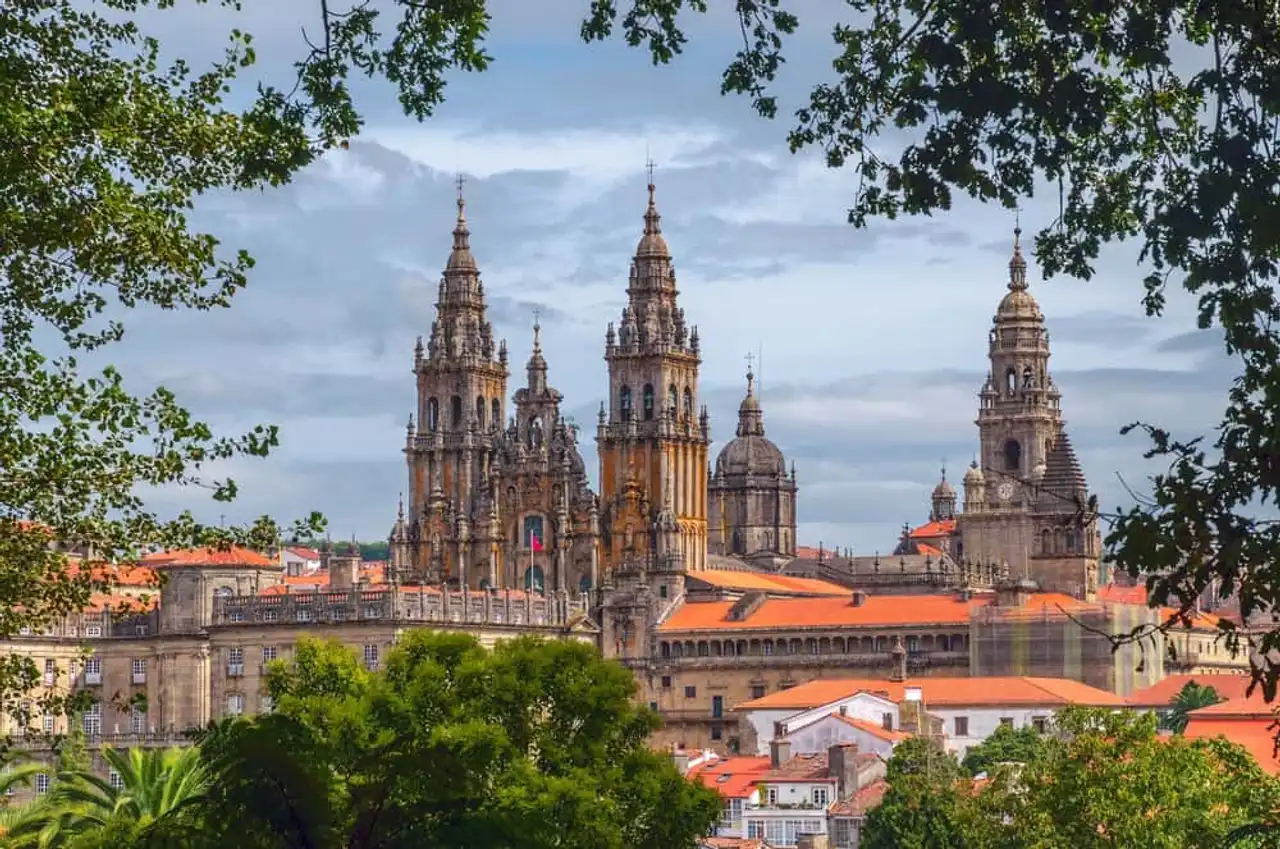
Santiago de Compostela – Photo credit: Shutterstock – Sergey Golotvin
The pilgrimages resumed gradually in the 19th century with the addition of a new date of religious celebration: that of May 24. It is indeed decided that on that date, Sara the Black, the maid of the Marys, will finally be celebrated. His worship began in the 1800s and at the same time marked the arrival of travellers to Saintes-Maries-de-la-Mer.
The cult of the travellers stirs traditions
For travellers, whose roots date back to India around the 10th century, Sara the Black would be the Indian goddess of life and death: Kâli. Sara the Black, or Sara the Kâli would eventually be her Christianized form. If Kâli is celebrated in some communities in India, the origins of the worship of Sara the Black for the gypsies remain blurred.
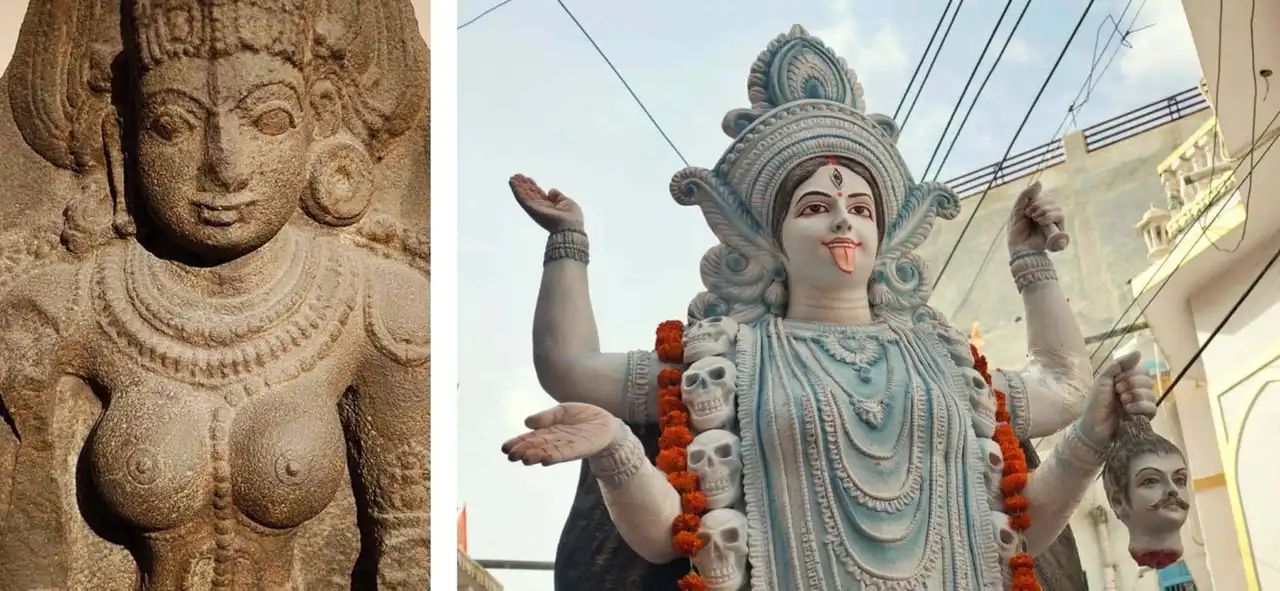
Photo credit: Wikipedia – Gautier Poupeau & Shutterstock – Roy Poloi
Let us go back to the Saintes-Maries, to understand how the commune has become a place of pilgrimage for travellers, even beyond national borders. Gypsies, gypsies, yenices, flyers, bohemians or Roma are international peoples and communities, especially present in Europe since the 15th century. They are characterized by their roaming, but also by their folklore and their beliefs.
If they pray “differently” of the Catholics of the time, it is this religion that animates them and will lead them to the Saintes-Maries-de-la-Mer in the late nineteenth century.
Thus, from the 19th century, the first gypsy pilgrims arrived from all over Europe to celebrate their patron saint, Sara the Black, whose plaster statue is exposed on the altar of the church of the Holy Marys. However, their arrival is not well seen from the premises, nor from the other pilgrims. All note that these “believers of believers” sleep in the church at night, an act judged then blasphemous.
On the one hand, we are worried about their “life mode” and their “disturbing aspect”, to take back the testimony of the time. Others see from a bad eye the exuberant devotion of these pilgrims who embrace Sara, cry, sing hymns, enter into transe. In short, according to the parish priest of the time, “they do too much” to be true Catholics.
Moreover, most believers believe that Sara the Black should not be recognized as an equal of the Holy Marys, since she is ultimately only their servant. Apart from the community of travellers, devotion to Sara is generally misunderstood.
From the 1850s to the 1950s, several laws attempted to prohibit the presence of gypsies in the Saintes-Maries. It is finally thanks to the intervention of a Camarguais marquis, Baroncelli, a strong supporter of the Gypsies, that they are accepted. Baroncelli believes that this unique pilgrimage alone has the power to energize tourism in the Saintes-Maries. As King René at another time, Baroncelli sees in this event an opportunity of dynamism in the Saintes-Maries and therefore undertakes to ensure that the worship of Sara the Black is recognized as such in the midst of the traditional Catholic cults of Provence.
As a result, a battle won for the gypsies, since the procession of Sara the Black to the Sea became an official event authorized on May 24, 1935.
Spirituality, sacred procession and festivities
From these thousand and one perpetia, the pilgrimage of the gypsies to the Saintes-Maries-de-la-Mer is an annual event that gathers between ten thousand and fifteen thousand gypsies from all Europe, as their ancestors before them. The pilgrims, of all ages and generations, then go to the church, candles by hand, singing, praying.
Sara waits them wisely on May 24 and 25 of each year, sitting at the expense in her crypt. She expects to be venerated and brought to the sea, her annual water bath and crowds, her sacred procession. The Grail for each pilgrim: touching Sara's bet by making a wish.
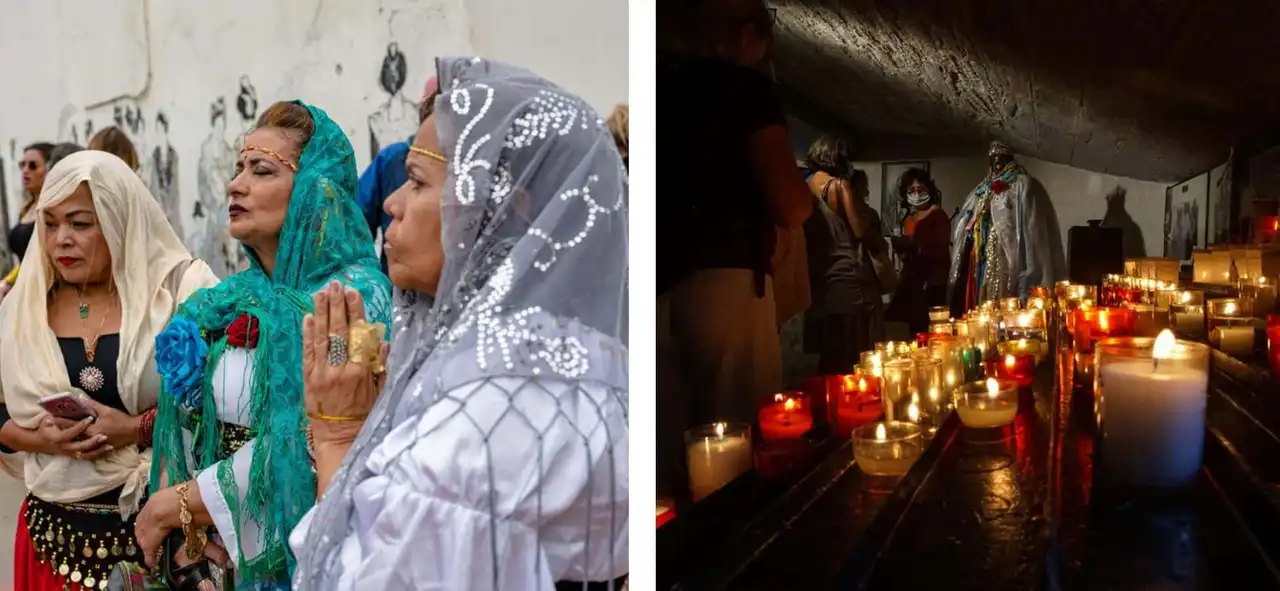
Photo credit: Shutterstock – visibile snc & matteo fabbri
On May 24th and 25th, the manoeuvring music and flamenco sounds beat life at the Saintes-Maries-de-la-Mer. The event is also a colour festival: men wear traditional clothes, with gold chains around the neck and other sparkling jewelry. Women wear elegant and colorful dresses, with a hat or flowers in the hair.
The pilgrimage is an opportunity to celebrate the patron saint, yes, but also to give a spotlight on the different facets of Gypsy, Manouche, Gypsy or Roma cultures, which are often associated with prejudices and victims of discrimination. The expressive and intoxicating stage coincides with spontaneous prayers, bursts of joy and emotion.
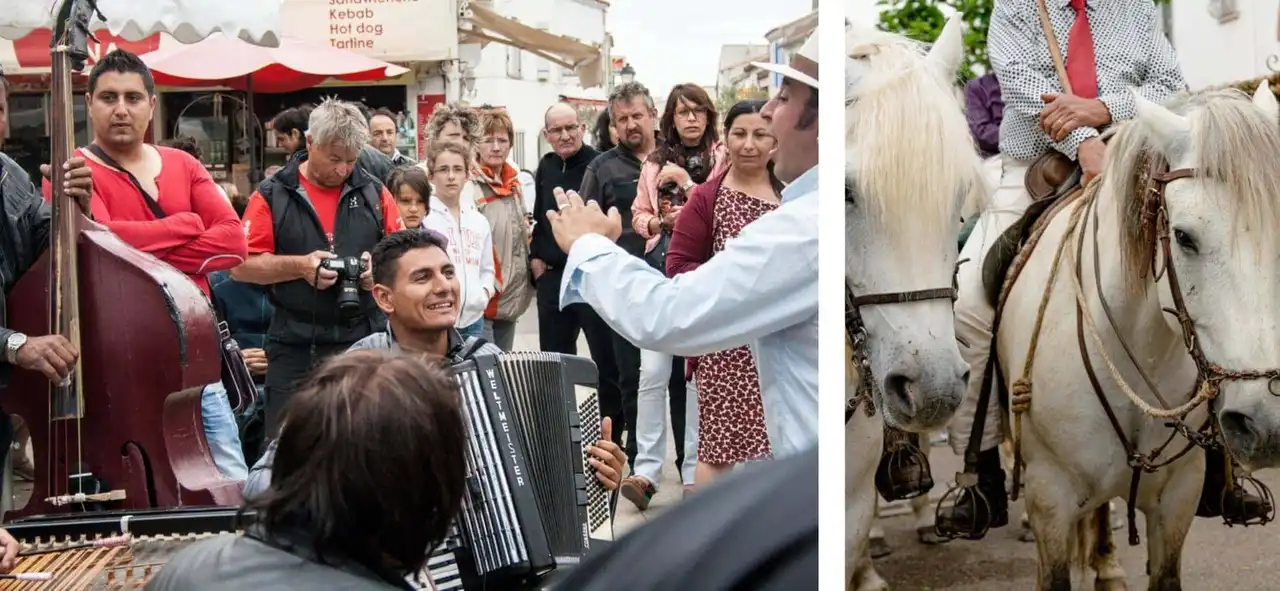
Photo credit: Shutterstock – Heather A Phillips & matteo fabbri
Also, the craftsmanship of travellers is highlighted during the demonstration. The street vendors offer knives, furniture, blankets, jewels with Sara’s effigy, decorated with Catholic crosses or miniature guitars hanging on gold chains. Some more unusual objects hold attention as giant pots that symbolize the friendly and shared cuisine, sabots for life in a caravan, or female jogging, a “incontournable of the travellers” according to one of the sellers.
“When you came once, you always want to come back” shares a pilgrim. And we want to believe her. Religious or not, visiting the Saintes-Maries-de-la-Mer during the gypsy pilgrimage represents the opportunity to discover the culture of travellers and to explore a spiritual heritage that has crossed the ages.
It is also the opportunity to meet Sara the Black, the Federative, the goddess for some, holy for others. Don’t hesitate to whisper your most expensive wish in the ear by shaking his dress, you may have some surprises...
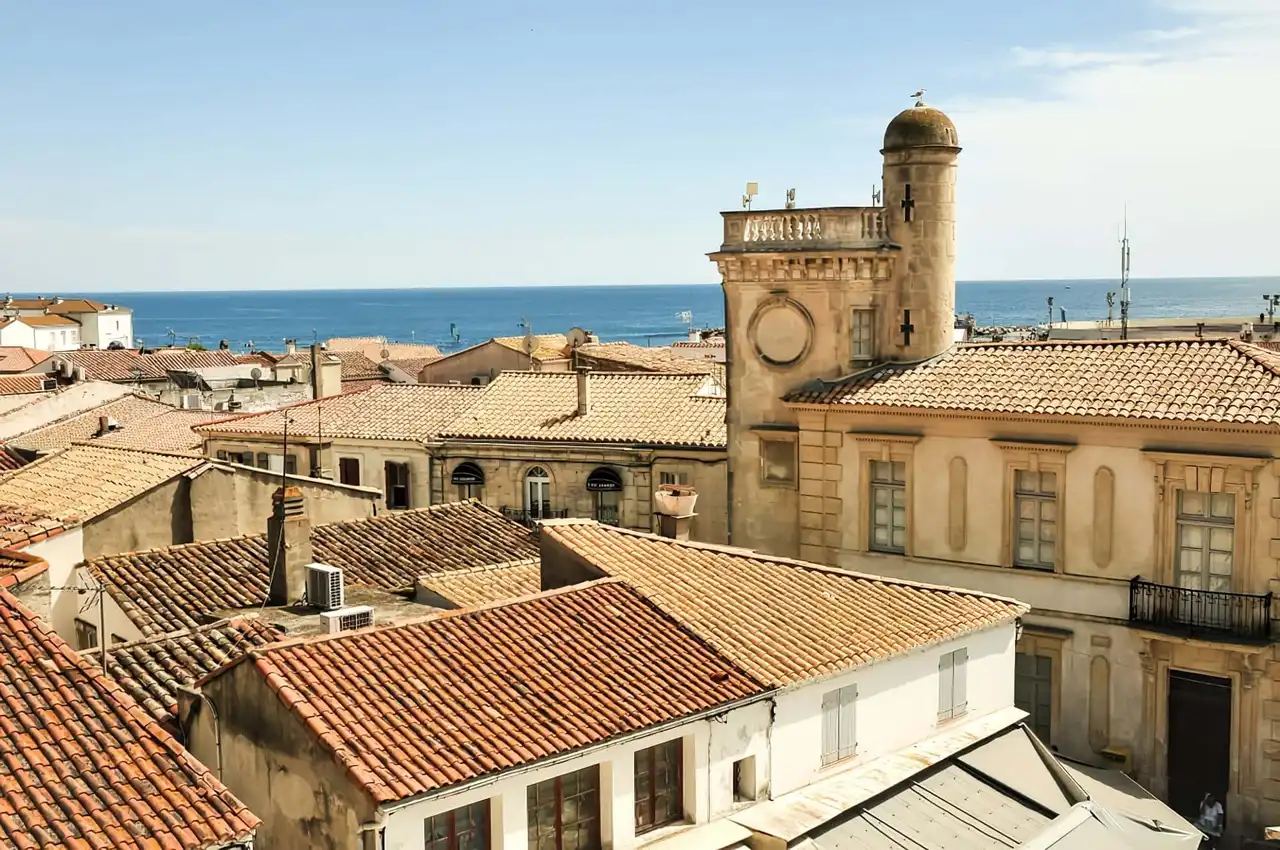






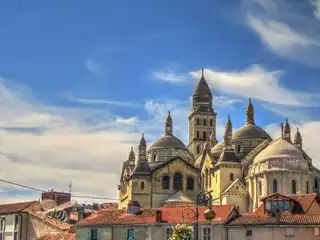
Loading comments ...